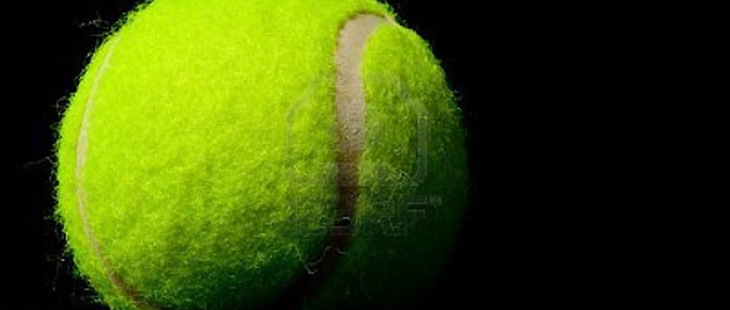

The hot news about Novak Djokovic is that he is, at 24, the best tennis player currently alive. Maybe of all time. I mean, he’s not. At the very least, he’s not yet. But consider the season he’s just about to cap off. With a record of 64-2, with 3 grand slam titles, it’s a good enough season, as pointed out by Brian Phillips, to be considered one of the very best of all time.
It’s up there along with the best seasons of tennis played by Federer, McEnroe, Connors, Laver. Although, Novak’s career is at this point doesn’t yet put him in (nor necessarily exclude him from) a conversation with those players. This is the major difference between when David Foster Wallace wrote the first two sentences of this paragraph about Roger Federer about five years ago (in an article recently reprinted with commentary on Grantland.com), and trying to apply the sentences to Djokovic.
On Monday Novak Djokovic made a first time US Open champion of himself, at the 3-sets-to-1 expense of Rafael Nadal. And prior to that, at the expense of Roger Federer, in an equally iconic five set match. The women’s side of things wrapped up before Monday (the men’s draw having been impacted by weather) but was eerily inconclusive. This year’s women’s final at the US Open lacked the same clarity as the men’s tournament. Sure, Serena Williams is officially back in the hunt. She played good tennis. But when it came to proving what exactly she is still capable of, the only definitive answer is her art of monopolizing the headlines. The Women’s 2011 US Open champion, Samantha Stosur, is still one dazzling grand slam performance out from obscurity, but only one. So her US Open performance right now might only be a flicker on the radar, but might be the fluttering of wings destined for future repercussions.
Watching Roger Federer play tennis seems, upon reflection, to be a kind of undeniable pleasure. His game seamlessly blends speed, agility, power, intellect, and an overall suave, smooth pace. But in his description of Federer, David Foster Wallace was talking about religion, and I’m not interested in that. Right now Djokovic is history’s actor. He’s playing the role of the best tennis player on the planet, despite Federer. And despite statements made mere paragraphs ago, I think that I’m happy most moments of the day to call Federer the best tennis player alive. So why doesn’t the best player always win? Rudimentary chaos theory.
Tennis is, of course, a complex system. Think of the vectors, the trajectories, the rain delays, the grunting. The science of chaos examines any of this very type of complex and dynamic system by first establishing a sensitivity to the original conditions within the system. The most famous (if slightly overused) example for this is the butterfly that flaps its wings somewhere, and causes a hurricane half the world away. The flapping of the wings is the original condition, the hurricane proof of the system’s sensitivity. That’s weather for you.
And what were the original factors that caused DFW to marvel at Federer’s wrong-handed backwards-running baseline kill shot? What factors later locked Federer into combat with Nadal? And now, what has brought along Novak Djokovic? (I know that he hasn’t suddenly shown up out of nowhere. He was, even before this year, one of the very best players in the world, ranked, in fact, third. But it is as though he has just emerged in the sense of coming into view. Because the measurably perfect order of his game has just emerged.) It would be absolutely impossible to tell.
Chaos theory is the study of complex and dynamic systems, systems which are apparently disordered. These systems are made of information (or just plain stuff) that seems, well, chaotic. But the phenomenon worthy of examination is the emergence of complex order from within the chaos, an order that can’t be determined but can seem perfect in its appearance. Now, the most iconic moment of this year’s US Open was Djokovic’s much documented return of Federer’s serve in the last set of their semi-final match, when Federer was serving for the match against Djokovic. Federer’s commentary on that play was quite philosophic. He half-complained that the myriad of factors that would have to have aligned for Djokovic to have purposefully made that return couldn’t have all been determined. (He made this complaint by way of saying that Djokovic hit the return like someone who had already given up. He himself doesn’t play like that, believing in hard work over giving in to the chaos of the game.)
If you consider all of the chaos of a game of tennis, all of the factors at play, everything that can contribute to things going wrong or going one way instead of another, and the slim margin of error that exists in any successful feat of athleticism (especially at a professional level) on a tennis court, Djokovic’s return was a small instance of seemingly perfect order. On a scale of one degree higher a magnitude, Djokovic’s unbeatable tennis from that point onward in his match against Federer and on display again in the finals match against Nadal, seems to match this phenomenon. And then consider Djokovic’s whole season, all of the sudden one of the greatest individual seasons ever played, to be the same thing on yet another scale.
Just as individual tennis players solve another player’s game by figuring that opponent out, like Nadal had seemed to have ‘solved’ something in Federer’s game when his ability to beat Federer first spilled over from clay to other surfaces, tennis seems to have a relationship with the outcome of history that has something ‘solved’ in its nature. There might not have been any way to match the determination of Roger Federer’s serve in that semi-final against Djokovic, but Federer’s serve being a winner simply wasn’t the pattern that was emerging within the greater system of tennis. The system produces stories all of its own accord. As in the case of Federer’s perfection, and then the triangle that then emerged with him Nadal and Djokovic only to reveal Djokovic’s change in character, tennis seems to produce a succession of unbeatable players as perfect instances out of chaos…
(A note to sports fans: this theory spirals rapidly out of control. It is of course in no way true. But wouldn’t it be interesting as a way to explain why Roger Federer is the best tennis player alive, but Novak Djokovic is unbeatable.)
__
Kyle Buckley is the Toronto Standard’s Sports Critic.














